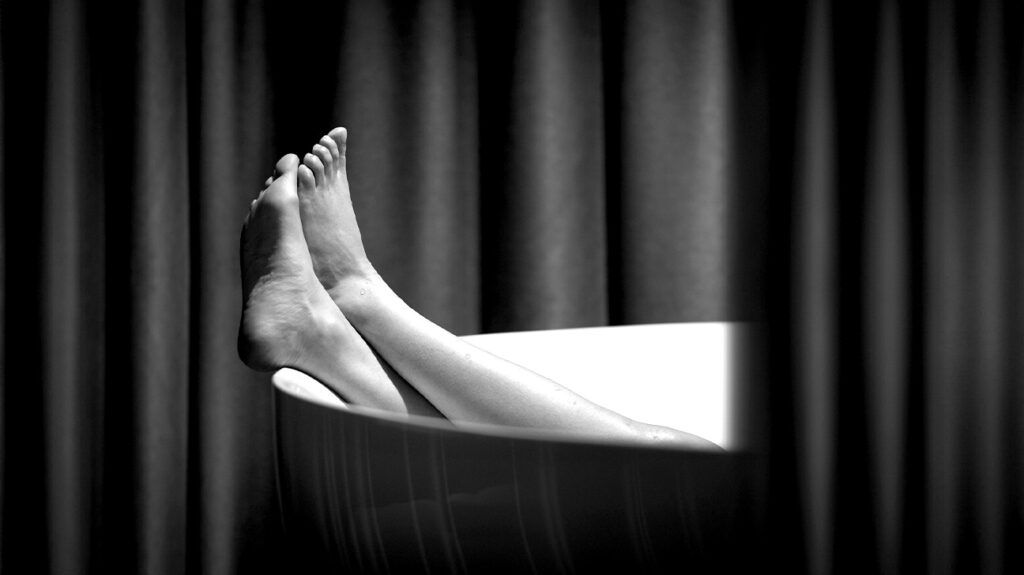People can remove dead skin from their feet using home remedies such as soaks and exfoliation. Preventive measures can also help reduce dry feet.
Dry skin often appears on the heels and sides of the feet and between the toes. It may make the affected area feel itchy, tight, and even painful. Although this may be irritating, it is rarely harmful.
Simple foot soaks, moisturizers, and regular exfoliation can reduce dry skin on the feet, remove areas of dead skin and calluses, and prevent them from returning.
In this article, we look at the causes and treatment of dry, cracked, or scaly skin on the feet.

The following everyday factors may cause dry skin on the feet:
- lack of moisture
- irritation
- heat and humidity
- harsh soaps
- aging
- certain medications, including diuretics
Dry skin on the feet may also occur as a result of a medical condition, such as:
- Athlete’s foot: Athlete’s foot is a fungal infection that causes a scaly rash between the toes and underneath the foot.
- Eczema: Eczema refers to a group of conditions that cause skin inflammation. Common symptoms of eczema include dry, crusty, or itchy patches of skin.
- Psoriasis: Psoriasis is a chronic autoimmune condition that causes thick, scaly patches of skin. People can develop psoriatic patches almost anywhere on their body.
- Hypothyroidism: People with hypothyroidism may develop dry feet because their thyroid gland cannot regulate sweat glands, which can lead them to become dry.
- Diabetes: Living with uncontrolled diabetes may result in damage to the peripheral nerves. Peripheral neuropathy
can affect nerves that regulate oil and moisture in the feet, which can cause dryness.
Dead cells on the skin’s surface naturally fall off, and new cells take their place. When someone does not remove the buildup of dead skin cells, they can form thick, flaky patches on the feet.
Over time, dry areas can become thick or cracked, especially on the heels.
Exfoliant treatments
Exfoliation involves removing dead surface-layer skin using exfoliating scrubs when washing or chemical exfoliating lotions. Exfoliating scrubs contain small abrasive materials that help remove dead skin.
Chemical exfoliators take the form of lotions or thin liquids. They contain ingredients that dissolve dead cells on the skin’s surface, such as glycolic acid, lactic acid, and alpha-hydroxy acid.
Pumice stones or foot files
People can use a pumice stone or metal foot file to mechanically remove dead skin from the feet.
They can do this by following the steps below:
- Soak the feet in warm water to soften the dead skin.
- Wet the pumice stone or foot file with warm water.
- Gently rub the pumice stone or foot file over the dead skin or callus. Use circular motions with a pumice stone and gentle back-and-forth motions with a foot file.
- Rinse the dead skin off the feet. Repeat step three as necessary.
- Pat the feet dry with a clean towel.
- Moisturize the feet with cream, lotion, or oil.
Foot soak
Soaking the feet in warm water helps soothe and loosen dry skin while improving blood circulation to the feet, which can help prevent dry skin in the future.
Adding a small amount of vinegar to a foot soak may help treat mild forms of athlete’s foot. Vinegar has powerful antimicrobial properties that may help disinfect the feet and even eliminate foot odor.
Other beneficial ingredients to consider adding to a foot soak include:
- Epsom salt
- honey
- oatmeal
- lemon juice
- peppermint essential oil
Moisturize
Regularly moisturizing the feet will help reduce existing dry skin and prevent new dry skin from accumulating. Moisturizing the feet after using an exfoliator or a pumice stone will help the skin lock in moisture.
It is best to avoid lotions, creams, and moisturizers that contain alcohol, added fragrances, and artificial colors as these ingredients can worsen dry skin.
Instead, a person should look for products that contain:
- humectants, such as urea, aloe, and hyaluronic acid
- emollients
- occlusives, such as petrolatum, lanolin, and coconut oil
Wear moisturizing compresses
For extra hydration, a person can try using moisturizing gel-lined socks. Gel-lined socks contain natural oils and vitamins that help hydrate and repair dry skin on the feet.
People can get similar results using their usual moisturizer and a good pair of cotton socks or other fabric wrap. At bedtime, they can apply a generous amount of moisturizer to the feet before slipping on a pair of breathable cotton socks. In the morning, they should remove the socks and rinse the feet.
People can use the following tips to help prevent dry skin on their feet:
- Practicing proper foot hygiene, which includes thoroughly cleaning the feet, removing dead skin, and keeping the skin hydrated with a good moisturizer.
- Avoiding lotions, soaps, and body washes that contain alcohol, added fragrances and colors, and other potential irritants.
- Using warm, rather than hot, water for showers, baths, and foot soaks.
- Wearing shoes that fit correctly.
- Instead of vigorously rubbing the feet after a shower, gently patting them dry with a clean towel.
Wearing the wrong shoes or spending too much time standing can result in dry, itchy feet and areas of irritated or scaly skin. Without treatment, dry skin can thicken and crack open, leaving the feet vulnerable to infection.
People can use pumice stones, exfoliators, and foot soaks to remove dry skin from their feet at home. Regularly applying moisturizer and removing dead skin will help keep the feet healthy and hydrated.
Certain medical conditions, such as eczema, hypothyroidism, and diabetes, can cause very dry skin on the feet.
People with severely dry skin on their feet might want to consider contacting a specialist foot doctor called a podiatrist or another healthcare professional to discuss possible treatment options.
